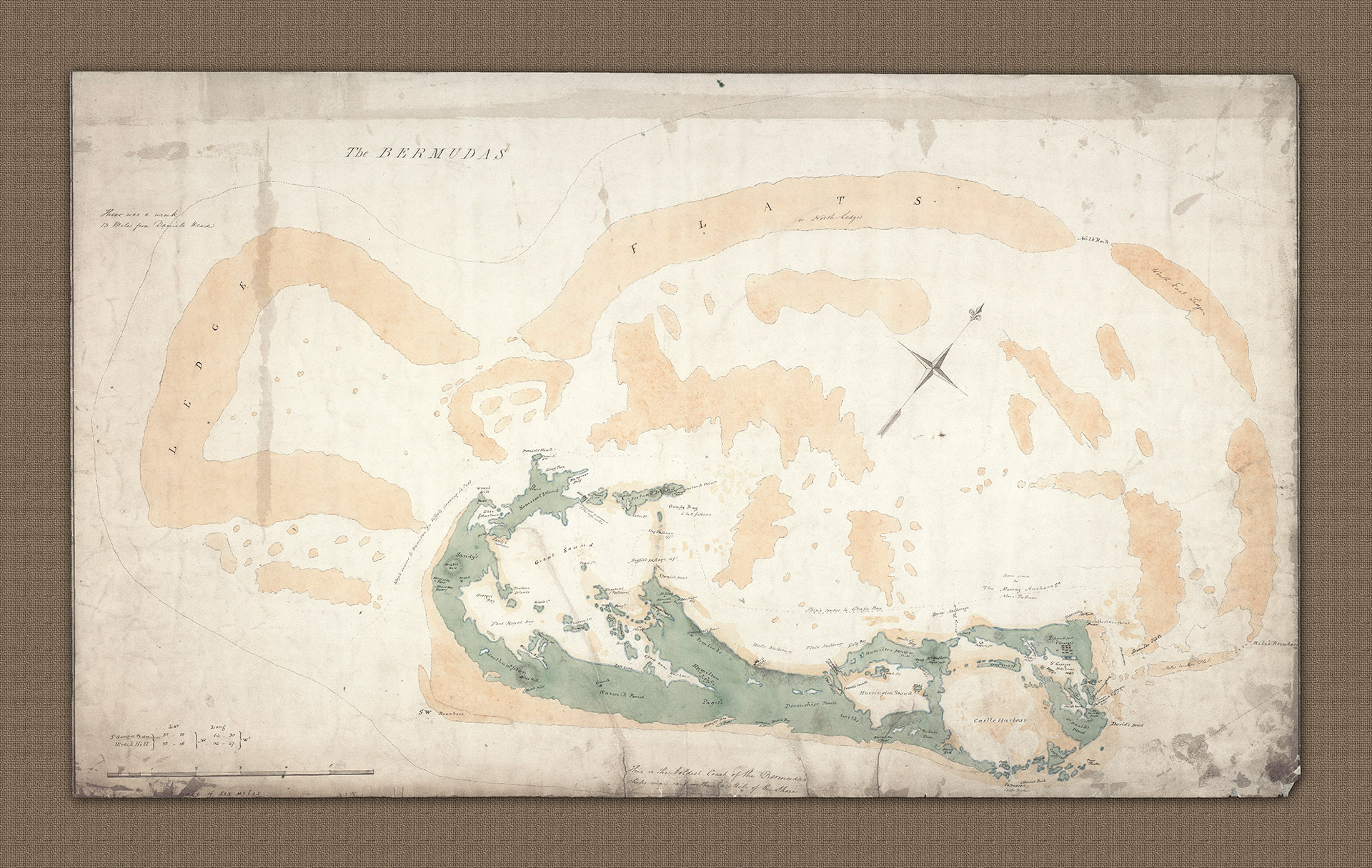There is an almost deliberate lack of cartographic and hydrographic detail, including soundings, features and locations represented on the chart. There are however enough to help to date the work as likely between 1822 and 1823.
One of the most significant features of the plan is the 'projected entrance' into Harrington Sound through the southwest peninsular next to the small natural channel still known today as Flatts Inlet. Although the proposed channel was never cut, it is clear that the British were conscious of the advantages of having quick and easy access to such an important natural harbor at a time when they were fortifying the Island against attack.
Other features worth noting on the plan include: the Commissioner's house located at the naval dockyard on Ireland Island which was built between 1823 and 1827 when the use of cast iron to replace all structural wood caused uproar in Parliament back in Britain when the cost of the project was revealed. Also, the naval hospital next to the dockyard which was started in 1818.
Possibly the most telling feature marked on the plan which helps to date it is the Admiral's House at St. Johns on Pembroke by Spanish Point. It was bought as a gift by the Bermuda Government for £3,000 and handed over to the Crown for the use of the Senior British Naval Officer on the Island in either 1814 or 1816.
In 1822 the St. John's Hill property was renamed Admiralty House and the location of St. John's Hill was renamed to Clarence Hill, in honour of His Royal Highness the Duke of Clarence. (It is now St. John's Hill again). The President's House, also in Pembroke, is marked. This house served as Government House from 1815 when the seat of government was moved from St. George's and was otherwise known as "Mount Langton" (after a Scottish estate belonging to Sir James Cockburn, Governor of Bermuda from 1814-1816). This original house was replaced in1892 by the property we now recognize as Government House.
Many of the fortifications we might expect to see on the plan are not shown, such as Fort George on the northern shore of St. Georges, and the Fort of Warwick Castle also north of St. Georges from where, in 1775, Bermudians stole hundreds of barrels of gunpowder from the British in their support of the American Revolution. The gunpowder was used by the Americans at the Battle of Bunker Hill.
Finally, also in the parish of St. Georges, the Martello tower at Ferry Reach is not shown. The fact that construction was started by the British in 1823 may, again, point to an 1822 date for the plan.
Undoubtedly, one of the most intriguing features of the plan is the inclusion of the comment at the bottom of the plan in the hand of the artist which states 'This is the boldest coast of the Bermudas. Ships may sail within a mile of the shore'. It must be compared directly with the comment which appears on the bottom of Lempiere's 1738 chart (and subsequent editions - see B100) which states 'This is the boldest coast about Bermudas & wherein some places the largest ships may safely come within half gun shot of the shore'.
For all of this detail, the survey is unquestionably a work of art and a refreshing change from all of the printed and published material of Bermuda to found in map collections.
This beautiful, hand-coloured plan of Bermuda shows the coastline, the surrounding coastal waters and navigable shipping channels. Although unattributed it was clearly produced with military usage in-mind, and is quite probably the work of the Royal Engineers who were posted to the Island from 1783. There is an almost deliberate lack of cartographic and hydrographic detail including soundings, and the features and locations represented on the chart are few but distinct, and combined with the places not shown, help to date the work as likely between 1822 and 1823.


